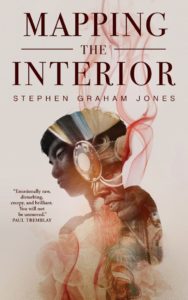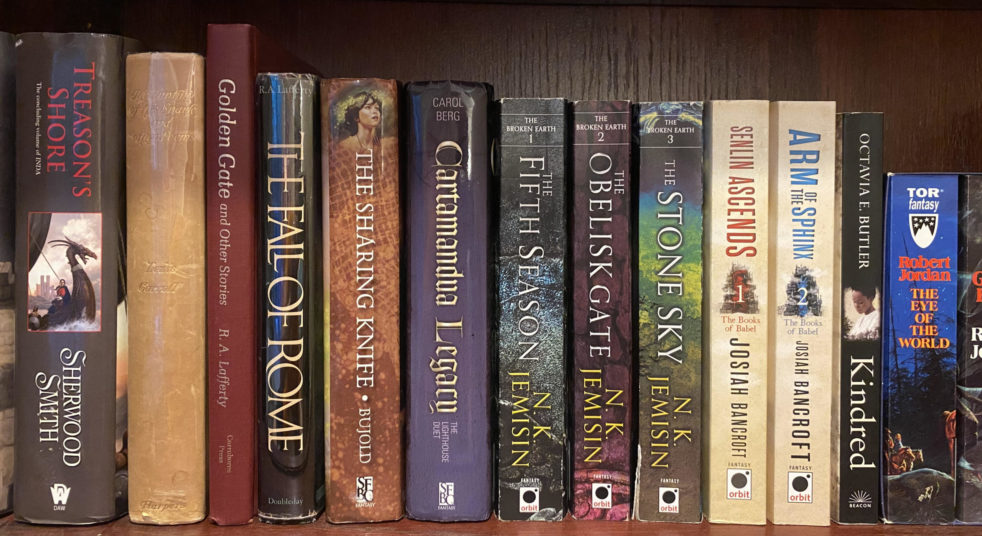
You know those authors with undeniable talent, but who always seem to leave you wondering exactly what to think? For me, that’s Stephen Graham Jones. It probably doesn’t help that he’s primarily a horror writer, and I don’t read a whole lot of horror. It also doesn’t help that he always seems ready to lean into the ambiguity. But his short fiction has crossed my screens several times, and I’ve always been impressed with the storytelling but not quite sure what to take away. So I thought I would try something longer. And as I’ve never been much for his preferred slasher subgenre, I decided to start with the psychological novella Mapping the Interior.
The blurb promises the story of an adolescent seeing another person stepping through the doorway, sending him on a project to map a house that is bigger and more dangerous than he’d imagined. From that description, I’d expected something of a haunted house tale, with winding passageways and no way of knowing what will come next. But the house is much smaller, and the haunting much more personal than all that. The lead lives in a small manufactured home with his mother and epileptic younger brother. One night, wandering half asleep, he catches a glimpse of his long-dead father. That sets him on a quest to reconnect with his father’s ghost, which precedes a series of semi-conscious encounters that makes it difficult to tell what is real and what is merely imagined.
Jones can spook with the best of them—I’ve read enough to know that—but that’s not really the goal here. Yes, there’s uncertainty, perhaps there’s ghosts, there may even be a dose of mortal danger. But it’s not especially scary, and it doesn’t seem intended to be. Rather, it’s the exploration of a Native boy processing complicated feelings about his father’s death and how that has affected his family. It’s achingly heartfelt, much more than it is spooky, with the whiff of real talk coming out particularly in lines like:
This is something all Indians think, I think: that, yeah, we got colonized, yeah, we got all our lands stolen, yeah yeah yeah, all that usual stuff. But still, inside us, hiding—no, hibernating, waiting, curled up, is some Crazy Horse kind of fighter. Some killer who’s smart and wily and wears a secret medicine shirt that actually works. Just, if you say this to anybody, you kill that Crazy Horse you’re hiding inside. So you walk around with the knowledge that he’s there if you ever need him. But, also, you try not to need him.
As for the supernatural storyline, it’s interesting to read, but a bit more confusing. The lead’s perspective could change so fast that I had trouble telling what was real and what was in his head. And perhaps that was the goal, but it made it difficult for me to really latch on to the central narrative. And with that narrative centering a culture I know more in stereotypes than in fact, it felt there was so much richness under the surface that went right past me without making the proper impact. Overall, it led to a book that I respected more than I enjoyed. Make no mistake—there was plenty here to keep me invested, even if I didn’t grasp every element. But that moment that brings it all together still escaped me. It’s still a good read, but I suspect it could be an exceptional read for the right reader.
Recommended if you like: psychological ghost stories, heartfelt Native settings.
Can I use it for Bingo? It’s hard mode for Standalone, Mental Health, and BIPOC Author, and it’s also a story where Family Matters.
Overall rating: 15 of Tar Vol’s 20. Four stars on Goodreads.
